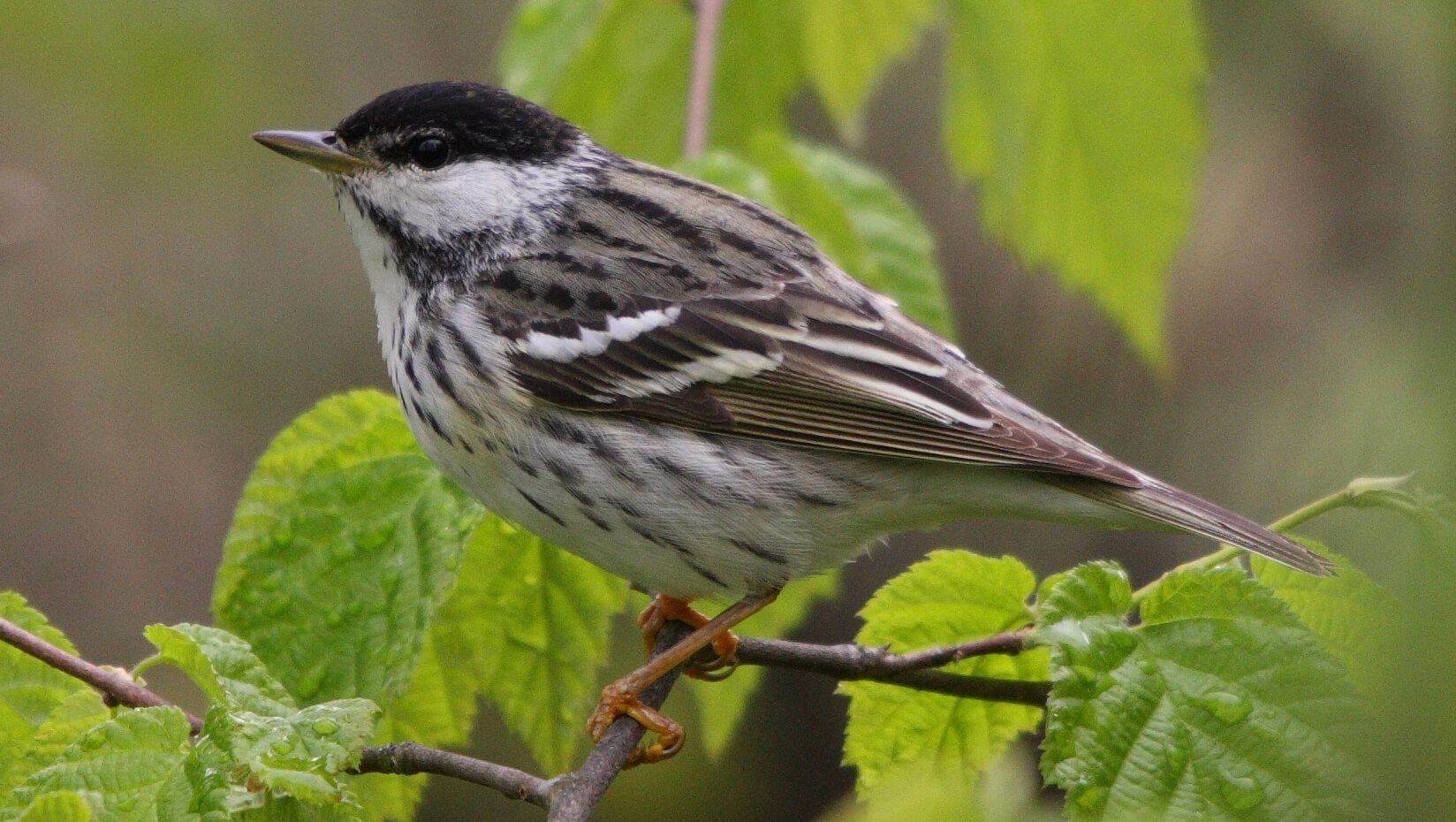
Holberton: Birds of a feather don’t always migrate together
The half-ounce songbirds that fly 1,800 miles nonstop over the Atlantic Ocean to winter in South America haven’t had a lot to chirp about lately.
The number of Blackpoll warblers (Setophaga striata) documented on the move through migration monitoring sites in the Gulf of Maine region has declined dramatically at some locations over the last 30 years.
But until recently, scientists hadn’t determined which of the breeding populations that span the entire North American boreal forest was responsible for this decline.
To learn where and when specific breeding populations moved during migration, a research team led by University of Maine biologist Rebecca Holberton collected feathers from Blackpolls at multiple locations throughout North America during fall and spring migration.
This study, she says, marks the first time scientists have determined a most likely explanation for why numbers of birds on migration have declined.
“In the past much of the focus has been censusing birds either on the breeding areas or on the wintering areas,” Holberton says.
“But by being able to identify where birds are going and where they are coming from during migration, we can learn more about the reason why we see declines during this period. By determining where birds are throughout the entire life cycle, we can better target ‘full life cycle’ conservation efforts more effectively.”
The team analyzed feathers for naturally occurring chemical signals that indicate where the bird was when its feathers grew, says Holberton. The distribution of the chemicals, a stable form of a hydrogen isotope (deuterium) that occurs naturally in rainwater and gets carried into the food chain, follows a distinct pattern across North America.
By analyzing each feather’s “isotope signature,” the team could identify the bird’s breeding location. Birds annually grow new feathers before flying to their wintering grounds.
Blackpoll warblers captured and banded during fall migration in the Gulf of Maine region, including Manomet Bird Observatory on the coast of Massachusetts, carried stable isotope signatures that indicated they came from breeding populations in Alaska and western Canada, she says.
Those breeding populations have shown the greatest and most rapid decline in North America, with many declining by 70–90 percent in the past decade. Over much of the same period, the same areas have experienced a rapid rate of deforestation due to harvesting and fires, says Holberton.
Blackpoll warblers winter throughout the Amazonian River basin, an area also experiencing deforestation and habitat loss.
During the project, the team also confirmed that, like many species of migrants, Blackpoll warblers have a so-called “loop migration.”
That is, their return flight from their winter sites to their breeding grounds in northern boreal forests is different than the path they take to get to the winter sites.
In the fall, before they fly across the ocean to their wintering areas, Blackpoll warblers from all populations across the breeding range gather on the Atlantic coastline of eastern North America.
In the spring, they all initially fly north into the southeastern U.S. But then birds from the eastern and western breeding populations diverge soon after entering Florida to head toward their respective breeding areas.
Researchers Adrienne J. Leppold of UMaine and Steven L. Van Wilgenburg and Keith A. Hobson of Environment Canada also took part in the project.
The team’s paper titled “Isotopic (δ 2 H f ) evidence of ‘loop migration’ and use of the Gulf of Maine Flyway by both western and eastern breeding populations of Blackpoll Warblers” in the Journal of Field Ornithology, is available online.
Contact: Beth Staples, 207.581.3777
